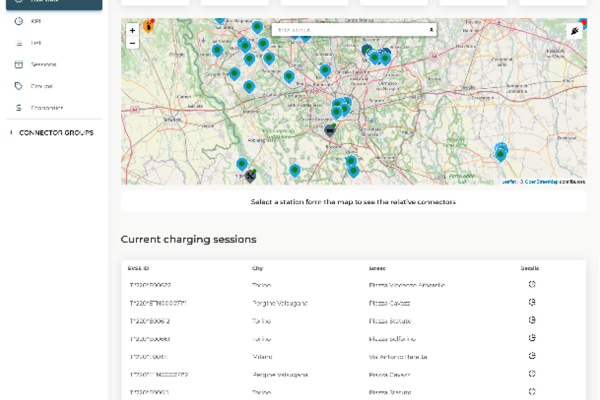
I NEED some help with the photocard driving licence.
I’m concerned that when reviewing driving licences for our staff, the two parts of the driving licence do not match. Should they? Any help would be much appreciated.
Simon Henstock, small business specialist at BCA, provides this comprehensive outline on all you need to know about the photocard driving licence and whether the two parts should match.
THE answer is yes to the question should the two parts of the photocard driving licence match.
Every time a licence is renewed, or updated with an endorsement, then the issue number is changed by the DVLA. If the issue number does not match and other details differ, then the driver could be tampering with, or fraudulently using an old version of their licence (the driver states they have lost their copy and applies for a spare).
Both the photocard and the counterpart D740 are considered as the ‘driving licence’ and should always be presented together to a company’s business car manager.
The D740 counterpart is different to the photocard part of the licence: it carries the driver endorsements, valid or invalid (dependent on endorsement, details can be legally held on the licence up to 11 years – DR10).
What to look for on the photocard part of licence
- The photocard licence for qualified drivers is pink in colour
- The provisional version of the licence is green and named provisional
- New licences – the photo is now in black and white
- Individual’s driving licence number
- Driver signature
- Current address
- Date licence issued
- Date of licence expiry
- Driver’s date of birth
- Issuing authority – eg DVLA
- Issue number – most important
- Number and alphabetic character on end – identifies the latest issue of the licence
- Restriction categories to drive – validation dates
- Pictograms on back of photo card licence – signifies the vehicle category type the driver qualifies to drive
- Holograph – steering wheel
- Security features – raised text, tactile surfaces. Changing images when moving the licence: on the full pink licences it’s a blue road sign changing to a black triangle; on the provisional green it’s a red road sign changing to a black triangle. This security feature is personalised according to the data on the card. It contains the last five characters of the driver number changing to the month and year of the photo expiry which appear and disappear depending on how you tilt the licence.
How to apply for a photocard licence
Application for a photocard licence, whether provisional or a change from a paper licence, can be applied for via the DVLA Licence Application Form D10 and is valid in general from issue for 10 years.
Thereafter, the driver is notified by the DVLA prior to expiry that they are required to update their licence – surrender of old licence (both parts) and a new coloured photo are required along with the fee (£25). The exceptional circumstances to the issue rules are driver disqualifications and licences revoked for a period of time, due to a medical issue.
What to look for
When checking the driver licence details the business car manager or business car administrator must be aware of above points. The recommendation is to ensure that at the onset of driving for the company on business, that a solid policy is in place and the driver is requested to submit their current valid licence and complete and sign a D796 DVLA mandate.
DVLA mandate (D796) for licence checking
Licence checking via DVLA mandate form can either be outsourced to a third party, or controlled internally by your company. The mandate is valid for three years from date of signatory and can be forwarded on to DVLA as required by an organisation.
In application to licence check, a contract agreement is drawn between the company and DVLA (legal credentials have to be met – data protection, conditions of use, law, storage and security of data and so on) and an account is applied by a given account number. Urgent mandate checks can be completed by faxing driver details direct to DVLA (morning only) and then following through with a phone call to DVLA offices shortly after. Communication of licence mandate details are always sent by both parties via recorded post.
The general checking fee to DVLA is £5 and due to volume of checks completed it is recommended that the account is topped up regularly.
Endorsement details reported by the DVLA should be carefully checked against the licence copies provided by the driver.
Managing licence risk – best practice recommendations
- Monitor/review driver licence reports regularly – advising company directors
- Record licence information on a secure fleet system – ensure limited access
- Ensure that paper hard copy is kept secure – legal requirement
- Set policy to who drives the vehicle eg main driver and spouse – hold both licences
- Review insurance requirements – age limit to drive under policy
- Users of private cars on business – implement policy whereby documents are presented and checked prior to driving on business
- Bulletins sent to drivers regarding licence/endorsement information
Foreign driver risk – best practice recommendations
Foreign EC/EEA visitors are permitted to drive in the UK for one year. If they become resident in the UK during the 12 months, the option is to apply for a UK licence (taking their driving test) or applying for a UK counterpart licence (by completion of a D9 form). This integrates the EU licence and will enable endorsements to be applied in the UK and for the DVLA to interrogate the licence issuing country and check any endorsement issued abroad.
Paper licence
Do not forget the old paper version of the licence is still valid. Be aware of fraud, as drivers have been known to lend their licence to persons unqualified or disqualified.
Further sources for driving licence help
To review licence requirements and validation of the various paper licences issued and their profiles, visit:
www.direct.gov.uk/en/Motoring/DriverLicensing/DG_068315
www.acfo.org – Look for ACFO Driving Licence – Best Practice Insurance/Road Safety







